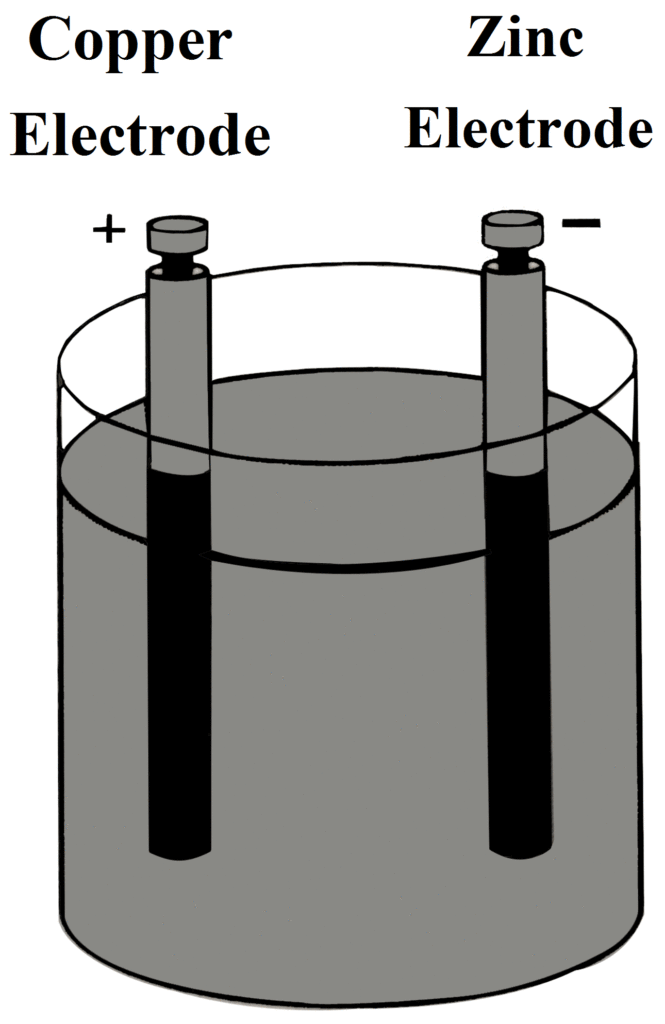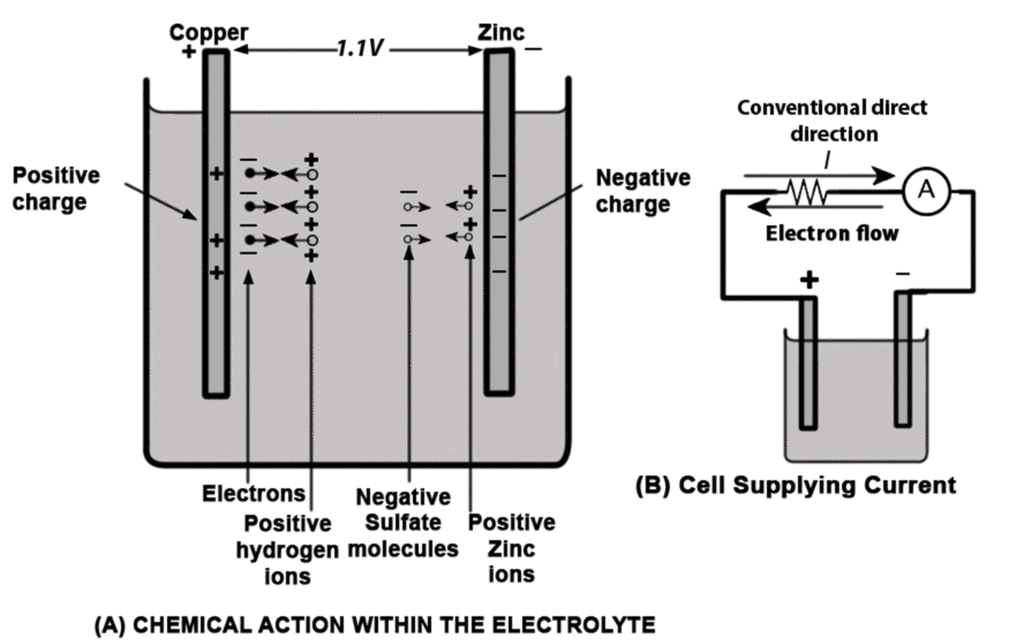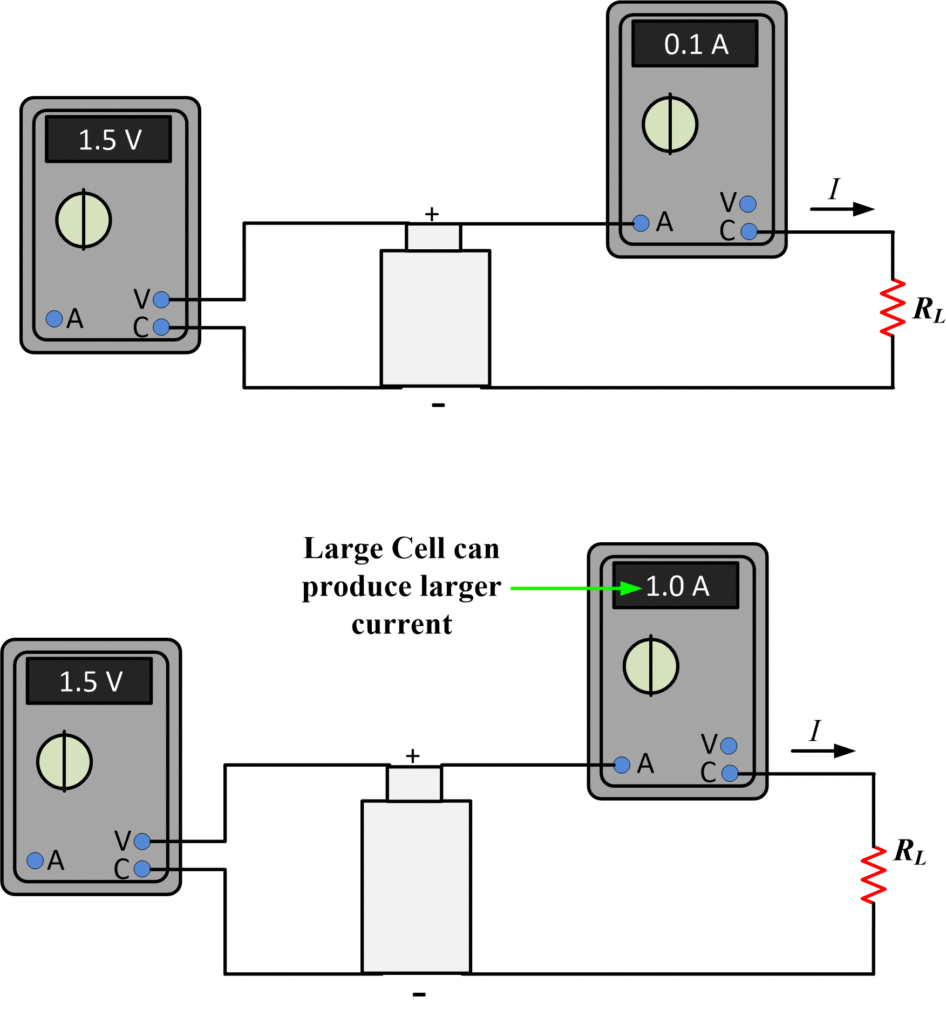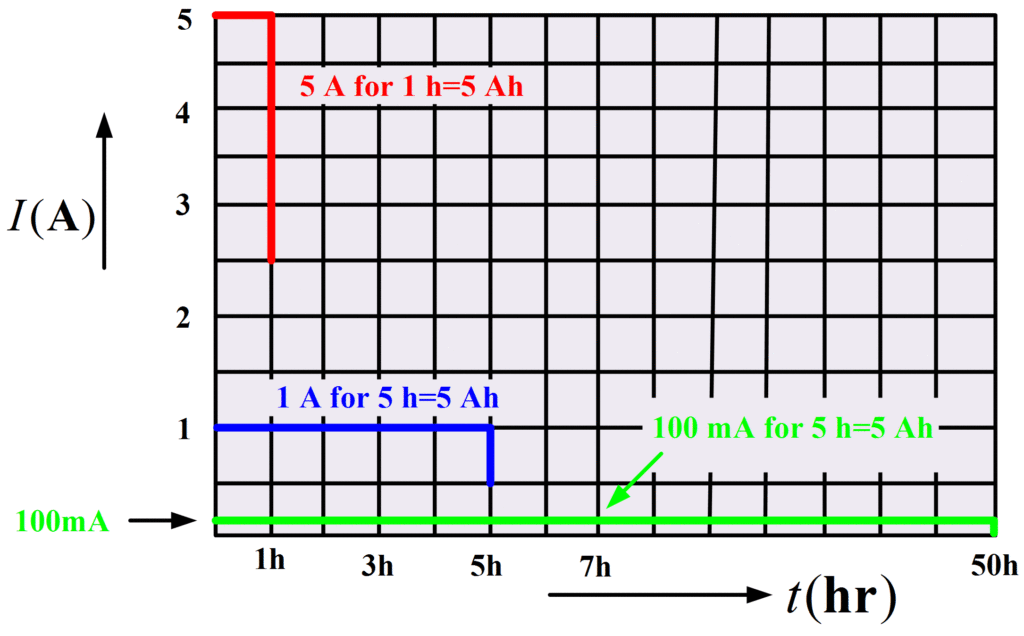Voltaic Cell Definition
A voltaic cell consists basically of two different metal plates immersed in an acid solution. The action of the acid removes electrons from one plate and accumulates them on the other plate. In this way, a potential difference is produced between the two plates, and a current can be made to flow through an external circuit.
Different types of voltaic cells exist for different applications. Some can be recharged and used again many times, others can be used only once and are then discarded. One of the most important of the rechargeable cells is the lead-mold cell which is the basic unit of the automobile battery.
Batteries of voltaic cells can be operated in series or in parallel, or in series-parallel combinations. The performance of a voltaic cell may be defined in terms of the maximum voltage and current it can supply, its ampere-hour rating, and the cell equivalent circuit.
- You May Also Read: Voltaic Cell Equivalent Circuit
Laboratory-type dc power supplies are usually designed to produce an adjustable output voltage and a specified maximum output current.
Voltaic Cell Construction
The construction of a simple voltaic cell is illustrated in Figure 1. The complete cell consists of copper and zinc electrodes partially immersed in a chemical solution known as the electrolyte. Diluted sulfuric acid is frequently used as the electrolyte, but any one of several other chemical compounds may be employed.
Fig.1: Voltaic Cell Construction
A simple voltaic cell consists of Copper and Zinc rods partially immersed in a liquid electrolyte. The Copper electrode is the positive terminal of the cell, and the Zinc is the negative terminal.
Voltaic Cell Working
Sulfuric acid is a combination of hydrogen and sulfate in which each hydrogen atom has given up an electron to the sulfate molecules. The solution remains chemically stable until the electrodes are introduced. The surface of the zinc electrode readily dissolves in the sulfuric acid, and the zinc atoms combine with the sulfate to form zinc sulfate. In this process, the zinc atoms leave electrons behind them on the zinc electrode [see Figure 2(a)]. This is because the sulfate already has an excess of electrons acquired from the hydrogen. As the zinc sulfate forms, hydrogen ions are released, and each hydrogen ion is an atom that is short of one electron (i.e., a positive ion). These ions travel to the copper electrode, where they acquire electrons, as illustrated.
Fig.2: Electrolytic Chemical Reaction
In the simple voltaic cell, positive ions are removed from the Zinc, creating a negative charge. Electrons are taken from the copper, leaving it positively charged. When a circuit is connected between the terminals, electrons flow from the negative terminal to the positive terminal.
In giving up electrons, the copper electrode becomes positively charged. Similarly, the zinc electrode becomes negatively charged as it accumulates excess electrons. Thus, a potential difference is created between the copper and zinc electrodes.
If no current is drawn from the cell, the chemical action eventually ceases when the zinc becomes so negative that it repels the (negative) sulfate molecules, and the positive charge on the copper repels the (positive) hydrogen ions. In this condition, the potential difference at the cell terminals is typically 1.1 V.
An external circuit connected to the cell terminals provides a path for electrons to flow from the (negative) zinc electrode to the (positive) copper electrode [Figure 2(b)]. Thus, the zinc electrode loses negative charges and the copper electrode gains negative charges (i.e., becomes less positive). Once the electrodes begin to lose some of their accumulated charges, the chemical action resumes, and the electrolyte continues to provide electrons to supply the output current from the cell.
Polarization
The hydrogen released in the simple voltaic cell frequently remains clinging to the copper electrode in the form of bubbles. When large areas of the electrode become coated with hydrogen bubbles, the active surface area is reduced and the cell’s ability to supply current is diminished. The effect is known as polarization, and it also occurs in more complex cells. Materials employed to combat polarization are termed depolarizers.
Output Voltage and Current
The potential difference produced at the terminals of a cell depends on the electrode materials. For the zinc and copper electrodes of the simple voltaic cell, the terminal voltage is approximately 1.1 V. For other types of cells, the terminal voltage is typically 1.5 V. This potential difference is produced regardless of the physical size of the electrodes or the quantity of the electrolyte.
The output current from a cell depends on the output voltage and the external load resistance. As always,
$I=\frac{E}{R}$
Where I is the output current, E is the cell terminal voltage, and R is the external load resistance. However, there is a limit to the maximum current that a given cell can supply. When this limit is approached, the cell’s terminal voltage begins to fall, so that the output current cannot be increased. The maximum current that can be drawn from a cell is directly related to the physical size of the cell’s components (see Figure 3). Obviously, electrodes with large surface areas can release more atoms and generate more free electrons than is possible with small surface areas. Consequently, physically large voltaic cells can sustain larger output currents than small cells.
Fig.3: Large and Small Cells Current Supplying Capacity
Cells of the same type produce the same terminal voltage regardless of physical size. larger cells can sustain a larger current than small cells.
Ampere-Hour Rating
The amount of energy that can be supplied by any cell is defined in terms of its rating in ampere-hour (Ah).
$Ampere-Hour\text{ }Rating=I*t$
If a cell can supply a current of 5 A for a maximum time of 1 hour (see Figure 4), it’s rating is
$I*t=5A*1h=5Ah$
When the same cell is supplying a current of only 1A, it can be expected to sustain this current for a time of:
\[t=\frac{Ah\text{ }Rating}{I}=\frac{5Ah}{1A}=5h\text{ }(Figure\text{ }4)\]
For a time of 50 h, a cell with a rating of 5Ah can be expected to supply a continuous current of
\[I=\frac{Ah\text{ }Rating}{t}=\frac{5Ah}{50h}=100mA\text{ }(Figure\text{ }4)\]
Usually, a cell’s Ah’s rating applies only to a certain range of load current. For a given cell, the Ah rating when supplying a high current is not as great as that at a low current level. One reason for this is that polarization occurs more rapidly when the load current is high.
Fig.4: Ampere-Hour Rating Graph
The Ampere-Hour rating of the voltaic cell defines the time for which the cell can sustain a given current level.
Ampere-Hour Rating Calculation Example
A voltaic cell supplies a load current of 0.5 A for a period of 20 h until its terminal voltage falls to an unacceptable level. Calculate the ampere-hour rating of the cell and determine how long it could be expected to supply a current of 200mA.
Solution
$Ampere-Hour\text{ }Rating=I*t=0.5A*20h=10Ah$
\[t=\frac{Ah\text{ }Rating}{I}=\frac{10Ah}{200mA}=50h\]



